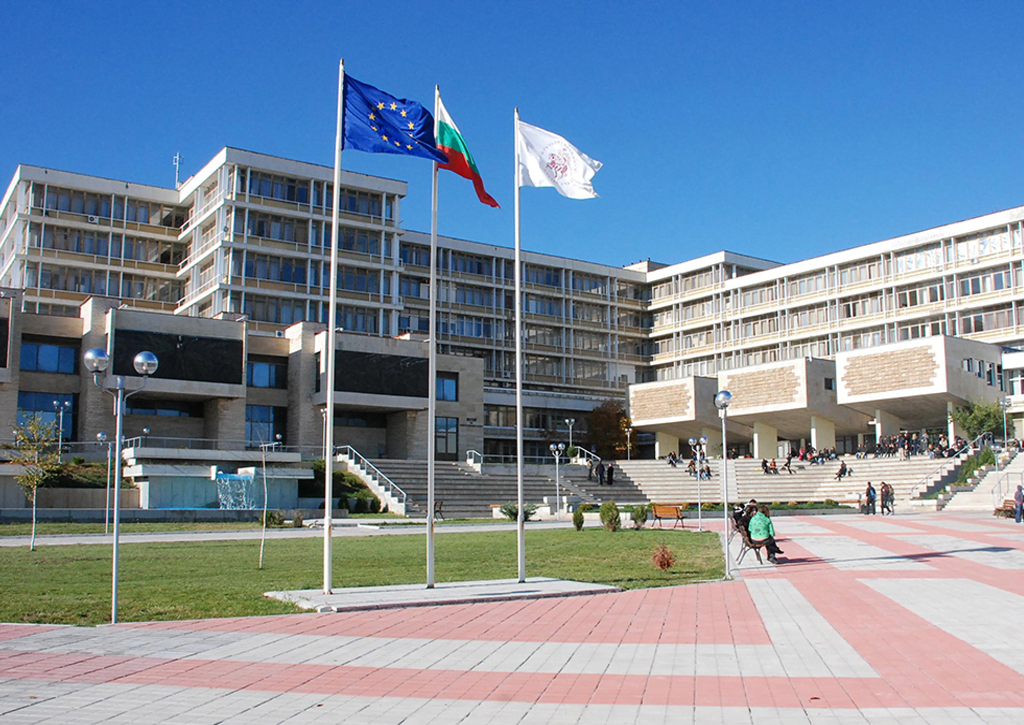Introduction
Trakia University (also called Thrace University) is one of the greatest universities in whole Europe, especially for those who wish to study medicine or veterinary medicine. The name of the university comes from the ancient area of “Thrace”. Trakia University was founded in 1982 and is located in Stara Zagora, Bulgaria. Despite being small in size, the university became a major higher education entity in 1995. Because Bulgaria is a member of the European Union, the programs of medical sciences last for six years, and students receive a master’s degree that is recognized across Europe. Trakia University has multiple colleges in Sliven, Haskovo, and Yambol.
Location
Trakia University is located in the Bulgarian city “Stara Zagora”, which holds the administrative center of Stara Zagora Province. With origins dating back to 340 BC, the city has its roots in history. The city is adjacent to the Bedechka river in the ancient area of Thrace, around 230 kilometers from the capital city Sofia. Stara Zagora has a well-developed industrial, service, and agricultural infrastructure.
The city also has over 40 educational institutions offering a diverse range of training programs. Stara Zagora is Bulgaria’s fifth-largest agglomeration. It is home to the country’s major hospitals, as well as Bulgaria’s oldest theatre and the largest opera on the Balkan Peninsula.
History
Trakia University was founded in 1995 and named after the ancient area of Thrace. The university emerged from the unification of the Higher Institute of zootechnics and Veterinary medicine (HIZVM) and Higher Institute of Medicine (HIM)-Stara Zagora. All existing faculties and independent departments of these two institutions merged to form Trakia University as ordered by the decision of the National Assembly in 1995 pursuant to articles from the Constitution of the Republic of Bulgaria and from the Higher Education Act (HEA).
The colleges of Trakia University can be found in Sliven, Haskovo, and Yambol. When it comes to the history of the city, Stara Zagora was the largest city in the country Before Bulgaria’s independence from the Ottoman empire. During the Liberation War in 1877–1878, however, the city was torched and destroyed by the Turkish army. In the first decade after Bulgaria’s independence, in the 1880s, the population of Stara Zagora fell to around 16,000 inhabitants. As you may expect, the condition now changed dramatically as the city rebuilt its building and regained its position on the Bulgarian map.
Faculties
If you visit Stara Zagora, you might notice the beautiful campus and buildings of Trakia University, especially its large library and hospital. Students receive training inside fully equipped medical departments that include 20 research labs and 16 diagnostic clinics. Here is a list of Trakia University’s faculties and associated departments:
- Faculty of Medicine
- Faculty of Veterinary Medicine
- Faculty of Agriculture
- Faculty of Pedagogy
- Faculty of Engineering and Technology
- Faculty of Economic
- Faculty of Education
- Department for information in-service teacher training (DIITT)
- Medical College- Stara Zagora
Admission
You must provide several documents, all of which must be translated and validated when applying for admission at Trakia University. Keep an eye on deadline dates if you want to apply because Trakia University’s academic year begins in September or October.
Applicants who want to study medicine or veterinary medicine in English must also take an online admission exam. Students are eligible to retake the exam after paying 50 EUR. You must pass other tests to be accepted into the university, including an English language test (for applicants whose native language is not English), a biology test, and a chemistry test.
Mid-July is the early application date, while September 1st is the late application deadline. The university offers an early exam session and a late exam session, both of which are essentially the same but differ in dates and purposes. The late exam session is the preferred choice for students who receive their high school diplomas in later times.
Trakia Medical University’s degrees, like those from Bulgaria’s other medical schools, are recognized by the European Union and the European Economic Area. Students also can get equivalent certification from the National Assessment and Accreditation Agencies in their home countries.
Student Life & Living Expenses
Probably, you will spend six years studying medicine at Trakia University, and you are expected to pay a tuition fee of 7000 EUR each year. Meanwhile, if you choose to study veterinary medicine, you will need 5,5 years with a tuition fee of 5100 EUR each year.
When you choose to study at Trakia university, you will get the chance to meet many international students from Germany, the United Kingdom, Greece, Sweden, and Norway. This makes it easier for you to form new relationships and expand your social network.
Also, at Stara Zagora, you can visit several museums and galleries and enjoy the food in diverse international restaurants, cozy cafés, malls, theaters, beautiful parks. Many cathedrals, churches, and various museums and art galleries can be found in Stara Zagora.
You can also engage in indoor and outdoor sports activities, which is a very important issue for students who like sports and physical exercises. You can get to the Black Sea by car or bus. The journey takes only one hour. While Sofia, the capital, is a two-and-a-half-hour drive away.
Also, getting around Stara Zagora is easy and affordable. You can visit the most important attractions in the city by walking on foot. When it comes to accommodation, a student dormitory is available at both the Faculty of Medicine and the Faculty of Veterinary Medicine. Rent is normally around 150 EUR per month. However, keep in mind that finding an empty flat is a hard thing to do, so you will almost certainly have to share a room with a housemate.

